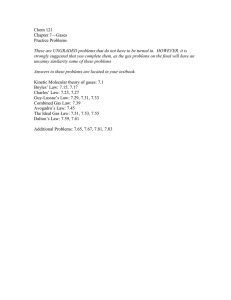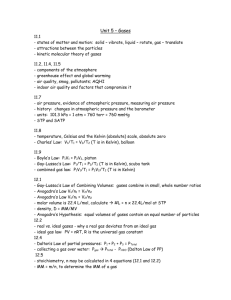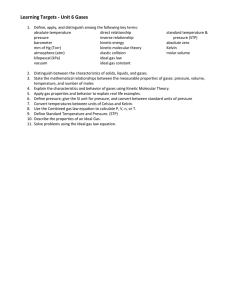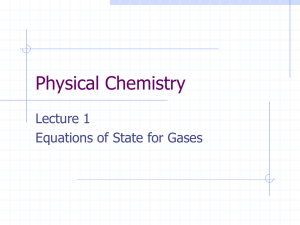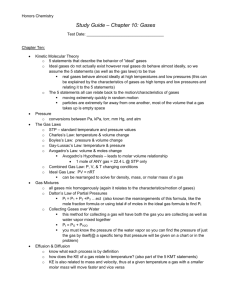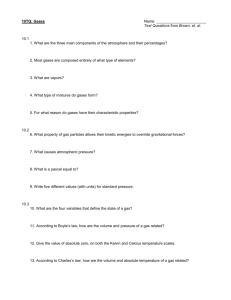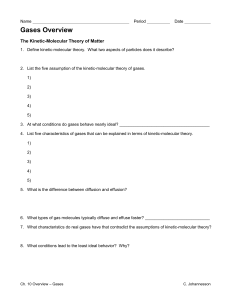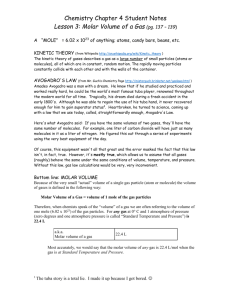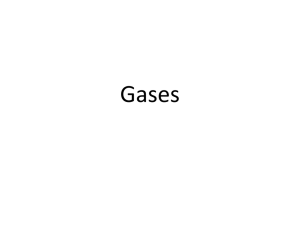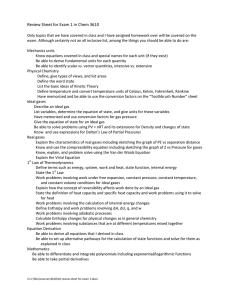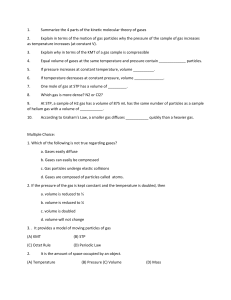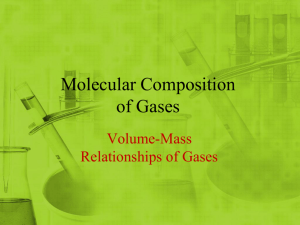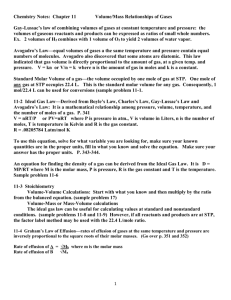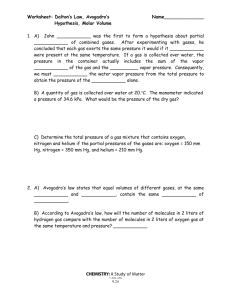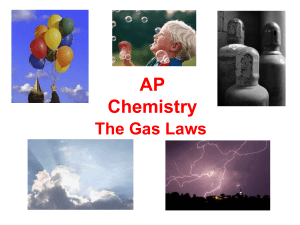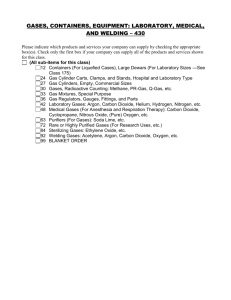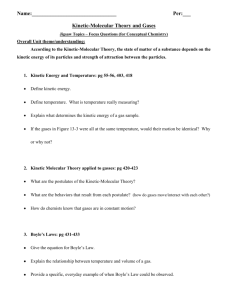Honors Chemistry
advertisement
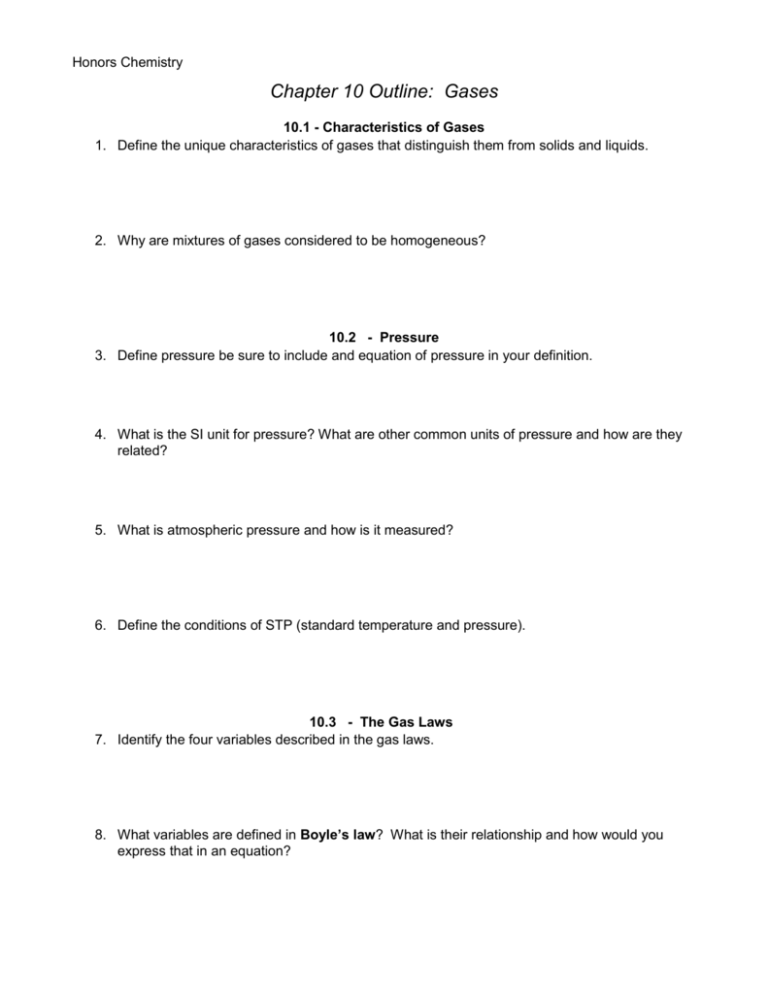
Honors Chemistry Chapter 10 Outline: Gases 10.1 - Characteristics of Gases 1. Define the unique characteristics of gases that distinguish them from solids and liquids. 2. Why are mixtures of gases considered to be homogeneous? 10.2 - Pressure 3. Define pressure be sure to include and equation of pressure in your definition. 4. What is the SI unit for pressure? What are other common units of pressure and how are they related? 5. What is atmospheric pressure and how is it measured? 6. Define the conditions of STP (standard temperature and pressure). 10.3 - The Gas Laws 7. Identify the four variables described in the gas laws. 8. What variables are defined in Boyle’s law? What is their relationship and how would you express that in an equation? 9. What variables are defined in Charles’s law? What is their relationship and how would you express that in an equation? 10. Interpret the quantity-volume relationship of gases as defined by Gay-Lussac and Avogadro. What is the basis of Avogadro’s hypothesis? 10.4 - The Ideal-Gas Equation 11. Identify the ideal gas law and the purpose of the ideal gas constant. Be sure to include an equation in your response. 12. Review table 10.2 and identify the value for R when pressure is recorded in atm. 13. What is meant by Standard Temperature and Pressure (STP). 14. What is the equation for the combined gas law (relating pressure, volume and temperature)? 10.5 - Applications of the Ideal-Gas Equation 15. Provide an equation to calculate gas density using the ideal gas law. Observe/rework sample problem #10.7 to help understand this process. 16. How can the ideal gas law be used to calculate volumes of gas in a chemical reaction? Review problem 10.9 to relate ideal gas law to stoichiometric calculations. 10.6 - Gas Mixtures and Partial Pressure 17. What is meant by the term partial pressure and what is Dalton’s law of partial pressure? 18. Review calculations for determining the pressure exerted by water vapor (PH2O), this will be applied in our lab activity, Molar Volume of a Gas. 10.7 - Kinetic-Molecular Theory 19. Summarize the five statements that define the Kinetic Molecular Theory
